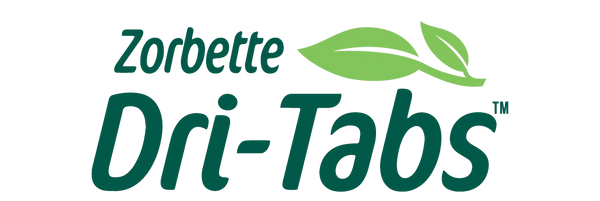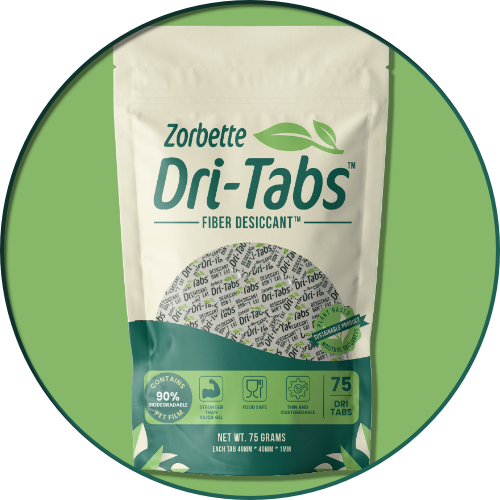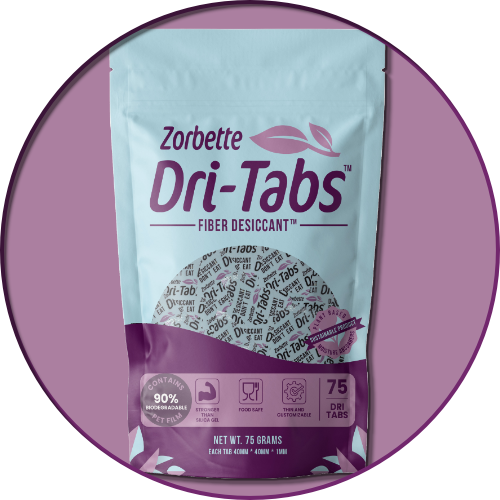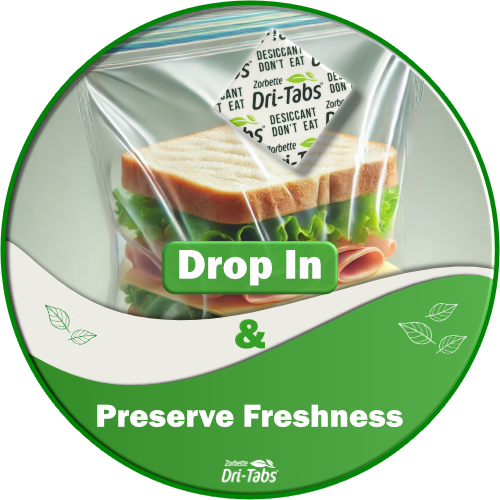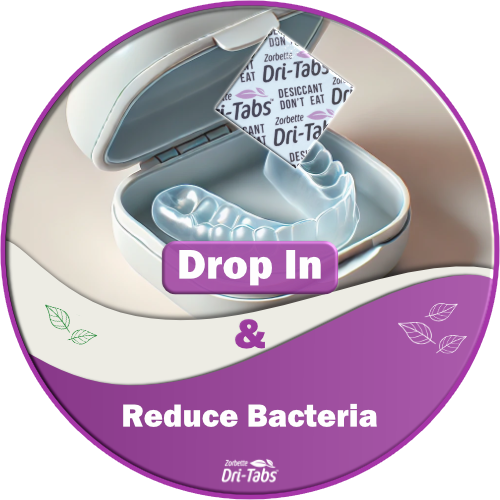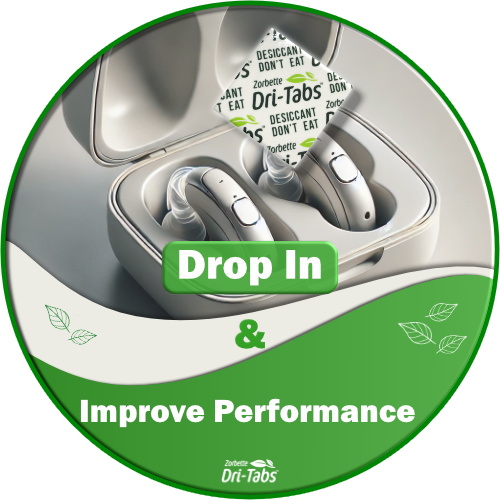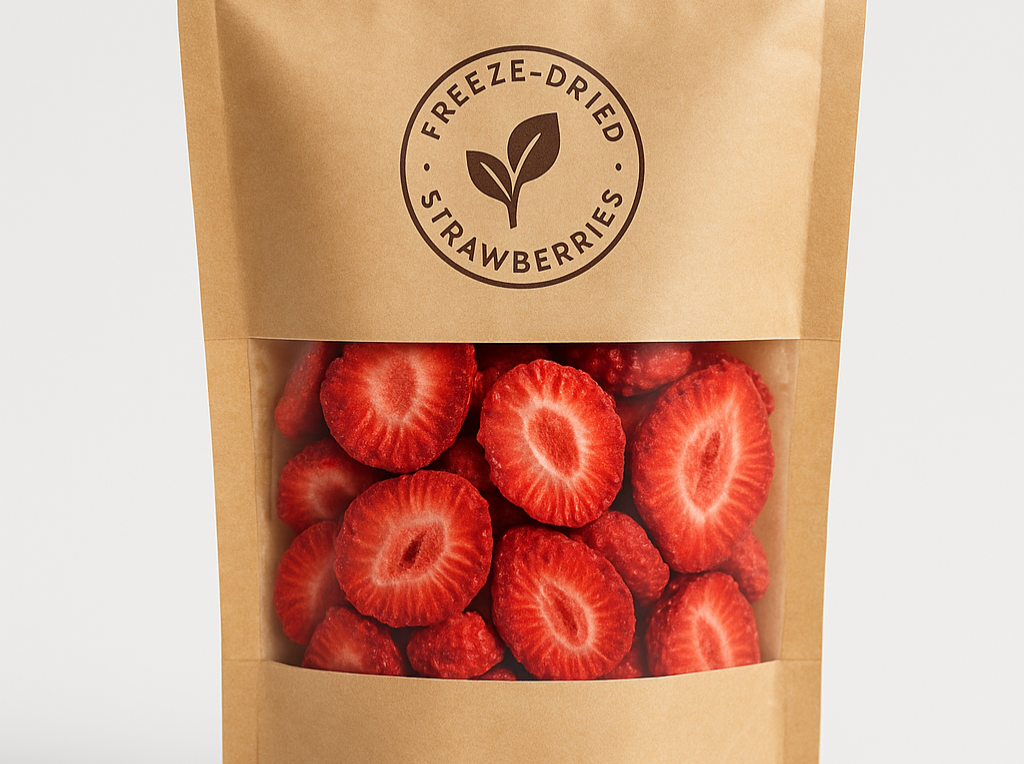
The Case for Fiber Desiccant Tabs in Freeze-Dried Fruit Packaging
Patrick SassanoShare
How a small, sustainable insert can protect crunch, color, and customer delight.
Freeze-dried fruit is a marvel of food science: light, crisp, intensely flavorful, and highly hygroscopic. The very micro-porous structure that makes strawberries shatter-crisp and blueberries candy-bright is also a moisture magnet. A few grams of water vapor sneaking into a pouch can soften texture, clump pieces, trigger sugar bloom, and raise water activity enough to invite microbial risk over time.
This post makes the practical, operations-first case for adding a fiber desiccant tab (like Zorbette Custom) to packaged freeze-dried fruit. You’ll see how it stabilizes headspace humidity, protects sensory quality, reduces returns, and advances sustainability—without the downside of plastic packet sachets.
Why moisture is the enemy of freeze-dried fruit
Hygroscopic structure: Freeze-dried cells are porous and thirsty; they rehydrate from ambient humidity, not just liquid water.
Headspace humidity swings: Distribution involves temperature cycling (cooler → warehouse → last-mile). Each swing can cause condensation/evaporation cycles, nudging RH upward inside the package.
Texture and flavor loss: Elevated RH collapses the pore structure, turning crisp to chewy. Aroma compounds dull as water activity rises.
Clumping & sugar bloom: Fructose/glucose on cut surfaces absorb moisture, become tacky, then set as unattractive white “bloom.”
Shelf-life compression: Even small water-activity increases can shorten the product’s quality window, especially in multi-serve, resealable packs.
Fiber desiccant tabs vs. traditional packet sachets
| Attribute | Fiber Desiccant Tab | Traditional Silica/Clay Packet |
|---|---|---|
| Form factor | Thin tab (paper-like), can be placed flat or adhered | Pillow-style packet/sachet |
| Materials | Predominantly plant-fiber matrix; hygroscopic salts | Silica gel or clay in plastic/fiber sachet |
| Food contact | Designed to be safe to touch food (no “do not eat” packet to tear) | Often treated as a foreign object; consumers may remove |
| Branding | Custom-print logos/QR/instructions | Typically generic, minimal branding |
| Sustainability | Low-plastic or plastic-free options; biodegradable fiber | Plastic/fiber sachet waste, hard to recycle |
| UX | Low profile, looks like part of the pack | “Packet in my food?” concerns and negative reviews |
Bottom line: Fiber tabs do the same moisture job while improving sustainability and consumer perception, and they integrate seamlessly with premium brands.
The operational benefits you’ll actually feel
Consistent crunch, fewer soft complaints
Stabilized headspace RH helps maintain that critical low water activity, preserving snap in strawberries, apples, mango, bananas, and blends.
Better presentation, less clumping
Tabs reduce caking/sugar bloom, so product looks vibrant and pours freely—important for snacks and cereal toppers.
Lower spoilage and returns
By dampening RH spikes in trucks and warehouses, tabs cut down on “stale/chewy” complaints and replacement shipments.
Happier audits
Moisture control is a simple, preventive step your QA and FSQA teams can document in HACCP/PCQI programs as a packaging intervention.
Sustainability that’s visible
Switching from plastic sachets to plant-fiber tabs supports corporate packaging goals. With custom printing, your tab becomes a branded sustainability touchpoint.
Easier line integration
Tabs are thin, nest easily in pouches or jars, and can be hand-placed or auto-dispensed. No seam snags or bulky sachets.
How to implement fiber desiccants in freeze-dried packs
1) Choose the right tab format
Direct-contact friendly: Fiber tabs are designed to safely contact food inside the package.
Variants:
Standard (thin protective veneer for durability)
Max (higher capacity; fully fiber for brands prioritizing 100% biodegradable materials)
2) Start with pragmatic dosing
Because formulations, pack sizes, and film MVTRs differ, begin with a simple rule-of-thumb and then tune:
Single-serve pouches (20–60 g product): 0.5–1 g fiber desiccant equivalent
Stand-up pouches (80–250 g): 1–2 g equivalent
Rigid jars/canisters (200–500 g): ~1 g per quart of headspace as a starting point
Tip: What matters most is headspace volume and film/barrier quality, not just net weight.
3) Place it where it works hardest
Lay the tab flat atop the product or adhere it to the inner lid for consistent exposure to headspace air.
Keep away from zipper tracks to avoid mis-seals.
Consistency matters, teach operators “tab on top, logo up.”
Common questions, answered
Will a desiccant overdry the fruit?
No, tabs target headspace humidity, not the fruit’s bound water. In sealed packs, they help hold a low, stable RH that maintains your target water activity.
Is it food-contact safe?
Fiber tabs are designed for direct contact in food packaging. If you have regional regulatory requirements, we’ll align on documentation and SDS.
Can customers reuse or “recharge” them?
For internal QA testing, fiber tabs can be re-dried at low bake settings and re-evaluated. For consumer packs, we recommend single-use to avoid confusion.
How do they compare on capacity?
Fiber tabs are engineered for fast adsorption and practical capacity aligned to headspace loads in small/medium packs. For unusual formats (large canisters, very humid lanes), we can spec higher-capacity variants.
Freeze-dried fruit sells on crisp texture, bright flavor, and clean labels. A thin fiber desiccant tab is a simple, proven way to guard those attributes from farm to front porch, while strengthening your sustainability story and trimming avoidable returns.

Patrick Sassano
Learn MorePatrick Sassano is founder Dri Biz Inc, a desiccant and rust preventative retailer.
